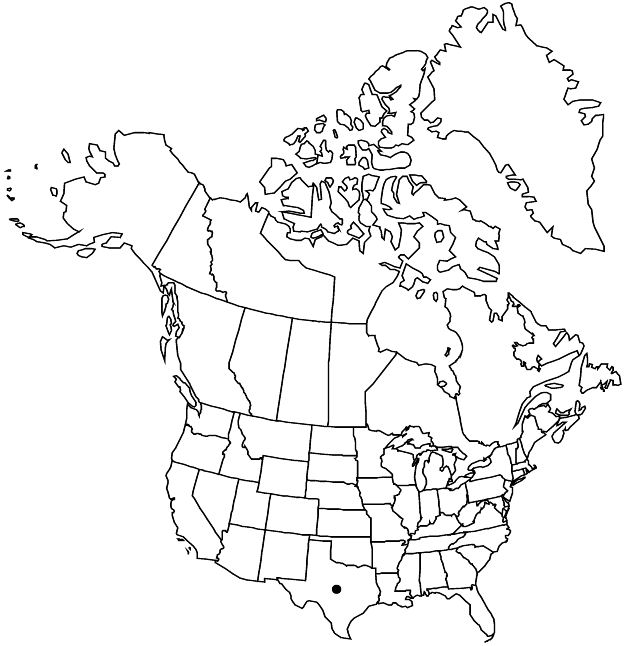Condalia viridis
J. Arnold Arbor. 20: 234. 1939.
Shrubs, 0.7–4 m; primary branches not thorn-tipped, secondary branches thorn-tipped, with short shoots, sparsely hispidulous to nearly glabrous; internodes 1–2(–4) mm. Leaves: petiole 3–10 mm; blade pale green, obovate to elliptic-obovate or elliptic-oblong, 5–8(–18) × 2.5–4(–10) mm, coriaceous, margins entire, not revolute, apex acute to rounded, truncate, or emarginate, surfaces glabrous or sparsely and minutely hispidulous; venation closely reticulate, inconspicuous abaxially. Inflorescences on short shoots, 1–3-flowered. Pedicels 0.4–1 mm. Flowers: petals 0. Drupes globose to depressed-globose, 5–6 mm; stones 1(–2)-seeded.
Phenology: Flowering May–Aug.
Habitat: Limestone hills, arroyos, flats, floodplain thickets, mesquite scrub, juniper and oak woodlands.
Elevation: 300–800 m.
Distribution

Tex., Mexico (Coahuila, Nuevo León, San Luis Potosí).
Discussion
In the flora area, Condalia viridis occurs from central to trans-Pecos Texas.
Selected References
None.